A lacrosse field is 60 yards wide and 110 yards long. Both men’s and women’s lacrosse fields have the same dimensions at college and professional levels.
Lacrosse is a fast-paced and physical sport that is gaining more and more popularity all around the world. If you’re a turf manager who needs to maintain lacrosse fields, or are simply a passionate fan who wants to learn more about the game, you are in the right place. How big is a lacrosse field? What are the boundaries? We’ll answer all these questions and many more in this article.
TURF TANK TIP:
Why worry about the lacrosse field dimensions when you can have a robot do it for you? The Turf Tank line marking robot can paint a lacrosse field all by itself, without any effort, faster and more efficiently than traditional line marking methods.
What are the dimensions of a lacrosse field?
To better understand the dimensions of a lacrosse field we need to take a look at the field’s diagram and get a better understanding of the different zones on the field of play.
Simply put, the lacrosse field is divided into three main sections: the attack area, midfield, and defensive area.
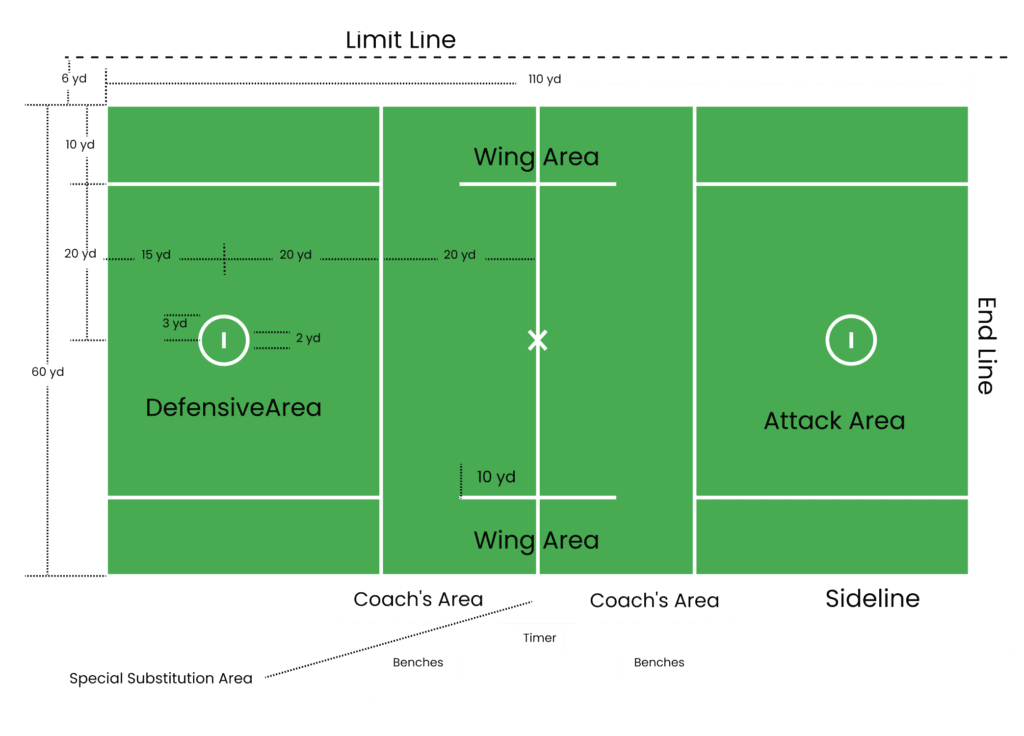
Boundaries of a lacrosse field
The boundaries of a lacrosse field are important because they define the area in which the game is played. The lacrosse field is bordered by two end lines and two sidelines.
The end lines are located at each end of the field, behind the goals, and are 60 yards long. When the ball travels over the end lines, it results in a turnover.
The sidelines are located perpendicular to the end lines on either side of the lacrosse field and are 110 yards long.
The sidelines together with the end lines form the boundary lines of the lacrosse field. When the ball crosses the outer boundaries, it is considered out of bounds and a turnover is awarded to the other team.
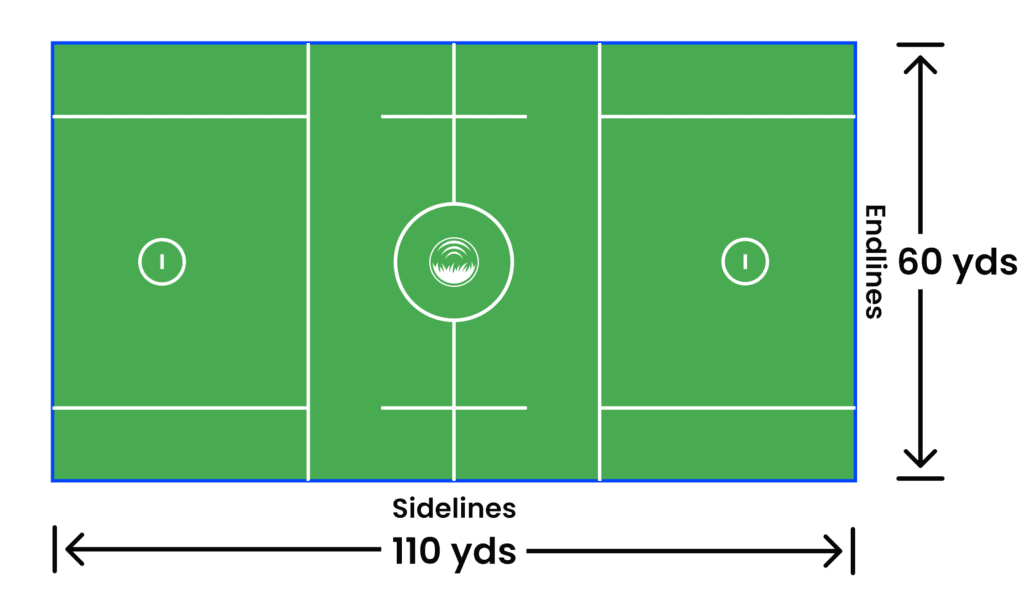
The defensive area on a lacrosse field
The defensive area is the area closest to the team’s own goal. This is where the defensive players try to stop the opposing team from scoring.
The defensive area is 35 yards long and 40 yards wide. Just like the attack area, the defensive area represents a restraining box, bordered by a restraining line, end line, and sidelines.
Each team has a designated defensive area in which up to 6 players are allowed (excluding the goalie) at any given time to avoid offsides. In women’s lacrosse up to 7 players are are allowed in the defensive area (excluding the goalie).
The attack area on a lacrosse field
From each team’s point of view, the attack area is the rectangular zone closest to the opposing team’s goal. This is where the majority of scoring plays happen and where the offensive players try to create scoring opportunities.
Inside the attack area there is a a restraining box, 35 yards long and 40 yards wide, which It is bordered by a restraining line on one side, and the sidelines and the end line on the other side.
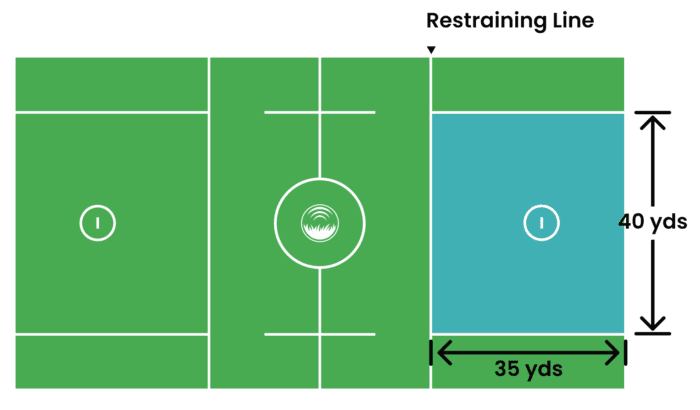
Each team has a designated attack area in which up to 6 players (in women’s lacrosse 7) are allowed at any given time. These players are known as attackers or strikers and their main objective is to score goals. In order for a player to enter the attacking zone, they must pass the ball over the midfield line into their attacking half. Once they have done this, they cannot return to the midfield until the ball has left the attacking zone.
The midfield on a lacrosse field
The midfield is 60 yards wide by 40 yards long and is the central area of the lacrosse field. It is restricted to the left and right by the restraining lines. Three midfielders from each team occupy the midfield area and the role of the restraining lines is to prevent a team from having too many players in the offensive or the defensive area. This violation is known as offside.
The center line splits the midfield area into two equal parts. For women’s lacrosse, there is a center circle, in the middle of the center line, with a radius of 30′ ,where the draw takes place during a game. For men’s lacrosse, instead of the circle, there is an X, which marks the place where the faceoff takes place.
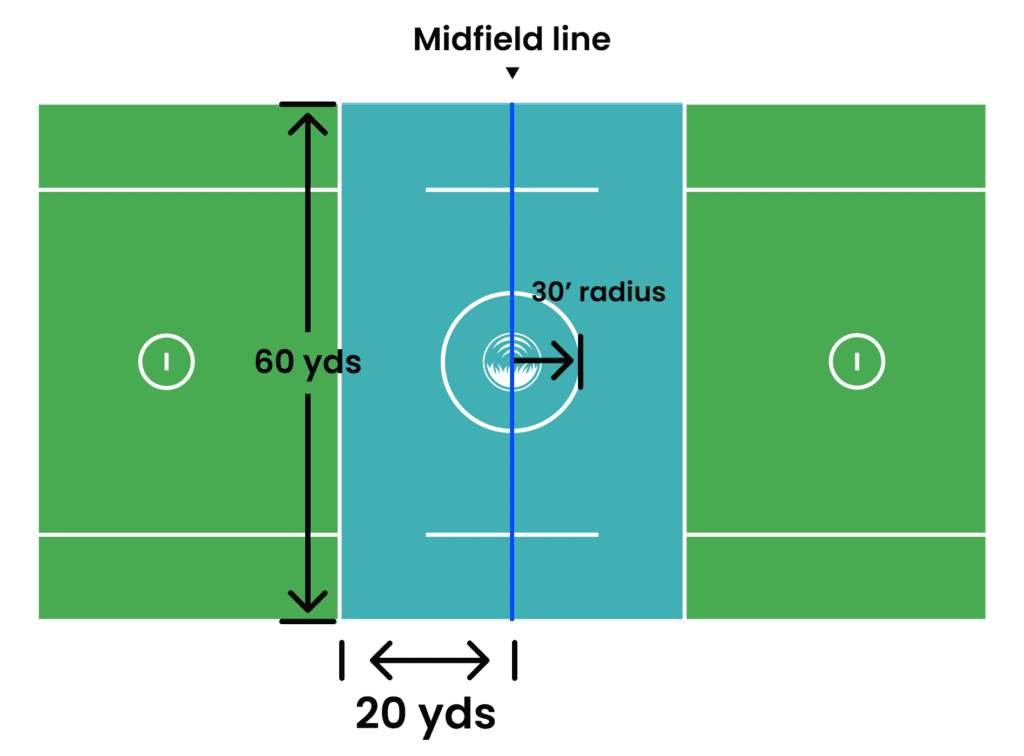
The wing area on a lacrosse field
The wing area, also known as the alley, is the part of the field located between the attack and the defensive area, and 10 yards from each sideline. This line indicates where each team’s nonface-off midfielders line up during a face-off.
The goal area on a lacrosse field
The goal area in lacrosse is the most exciting place on the field because it marks where a team can score. The goal area is composed of the net, surrounded by a circle, called the “crease”, with an 18-foot diameter. This is the area the goalie has to protect from the opposing team. It is also an area where only the goalie and the goalie’s teammates can enter, while the enemies cannot.
In front of the crease, there is an 8-meter arc, with a 12-meter fan extending beyond it and together they mark the “critical scoring area”. Any penalties committed inside this area generally are considered major fouls.
The goal line extended (GLE) is just an imaginary line extending 20 yards on each side from the goal.
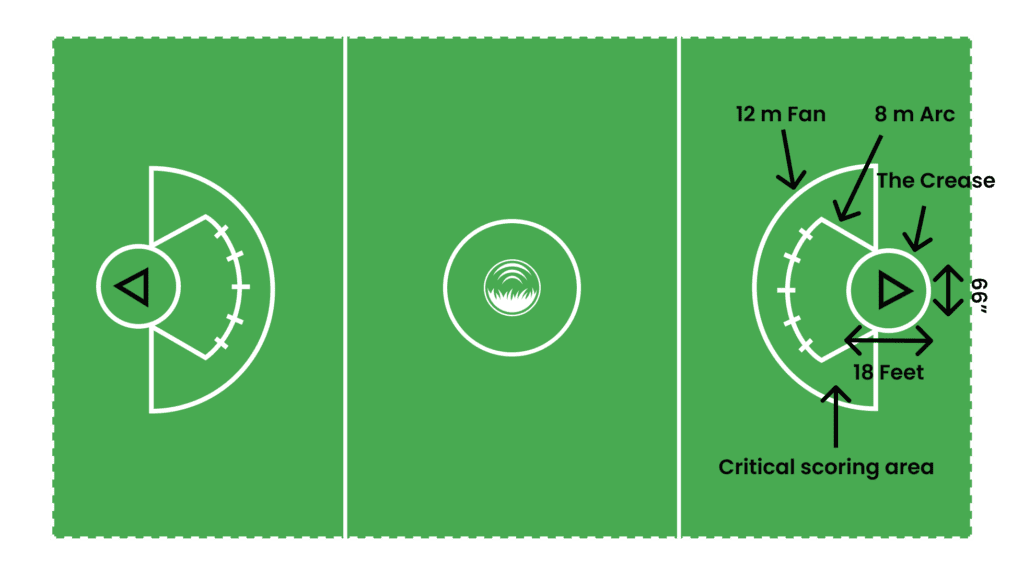
How to paint a lacrosse field?
Now that you know the lacrosse field dimensions, you can go ahead and start painting the lines. However, looking at all the different numbers and components of a lacrosse field, it is could be overwhelming to pay attention to all the details. Especially in women’s lacrosse, getting the fans in the correct angles can be quite difficult when pushing a manual marking machine.
Why complicate yourself when you can have a robot do it for you?
The Turf Tank line marking robot is the easy solution to paint a lacrosse field without any effort. All you have to do is fill it up with paint, select one of the lacrosse layout in the App, press start and watch the robot paint the entire field all by itself with maximum precision. All while you get more time for other tasks around the site!
FAQ
Frequently Asked Questions
No, a lacrosse field and a soccer field are not the same size. A soccer field can be anywhere between 50-100 yards in width to 100-130 yards in length, while a lacrosse field is 60 yards wide and 110 yards long. However, the size of a regulation soccer field is 100 yards by 60 yards. Because only 10 additional yards are necessary for lacrosse, most high schools with existing soccer fields may use them for both sports.
The lines on a lacrosse field are 2” – 4” wide, except the goal line which shall be 2” wide.
A lacrosse field is 110 yards long.
60 yards!
Experience autonomous lacrosse line marking here


